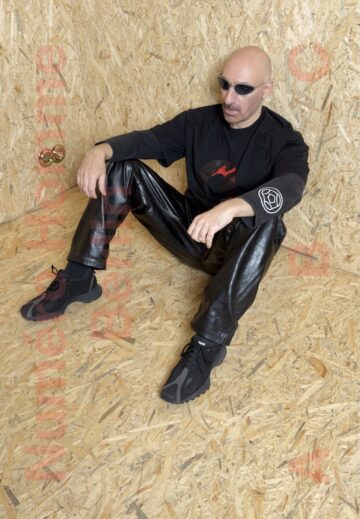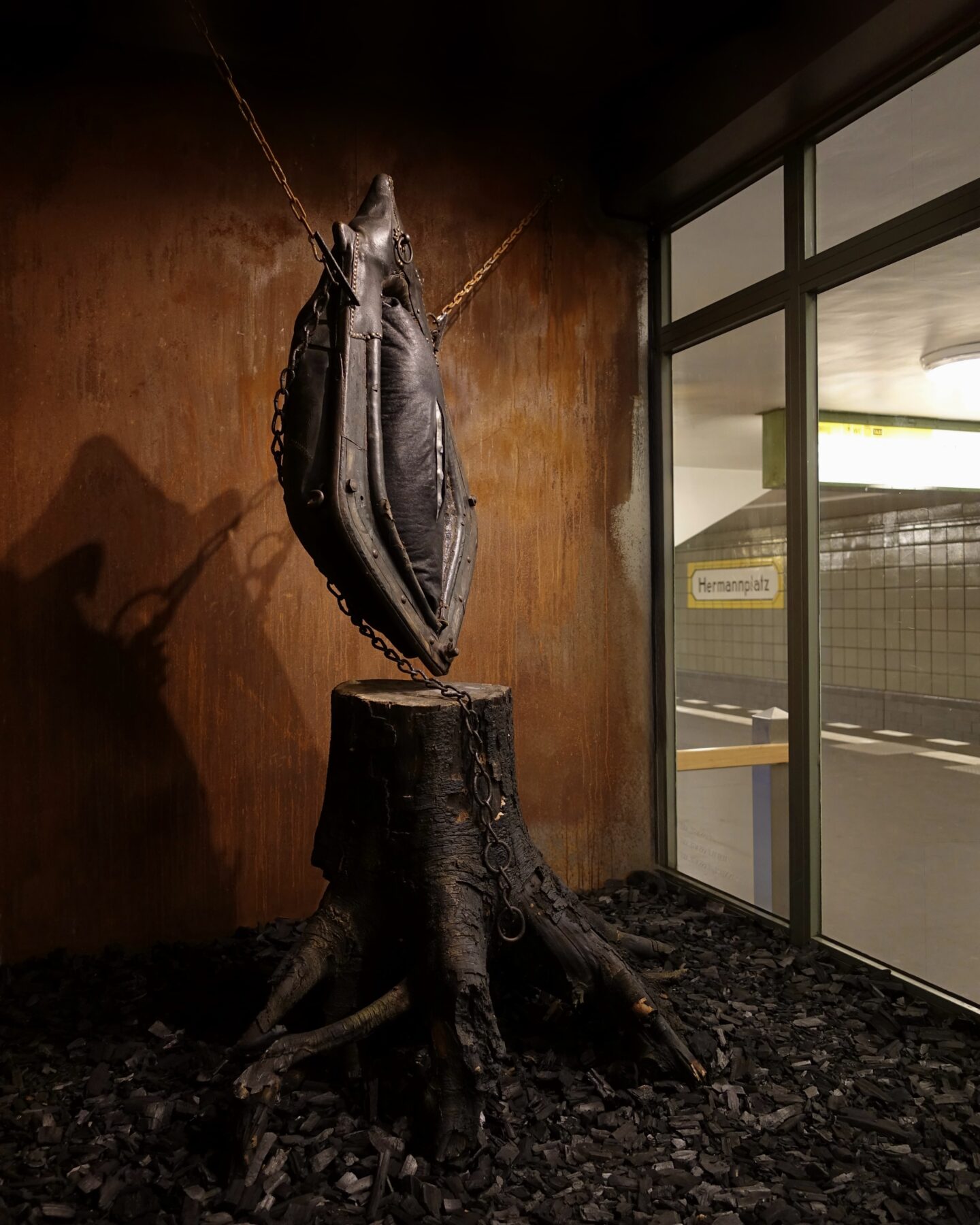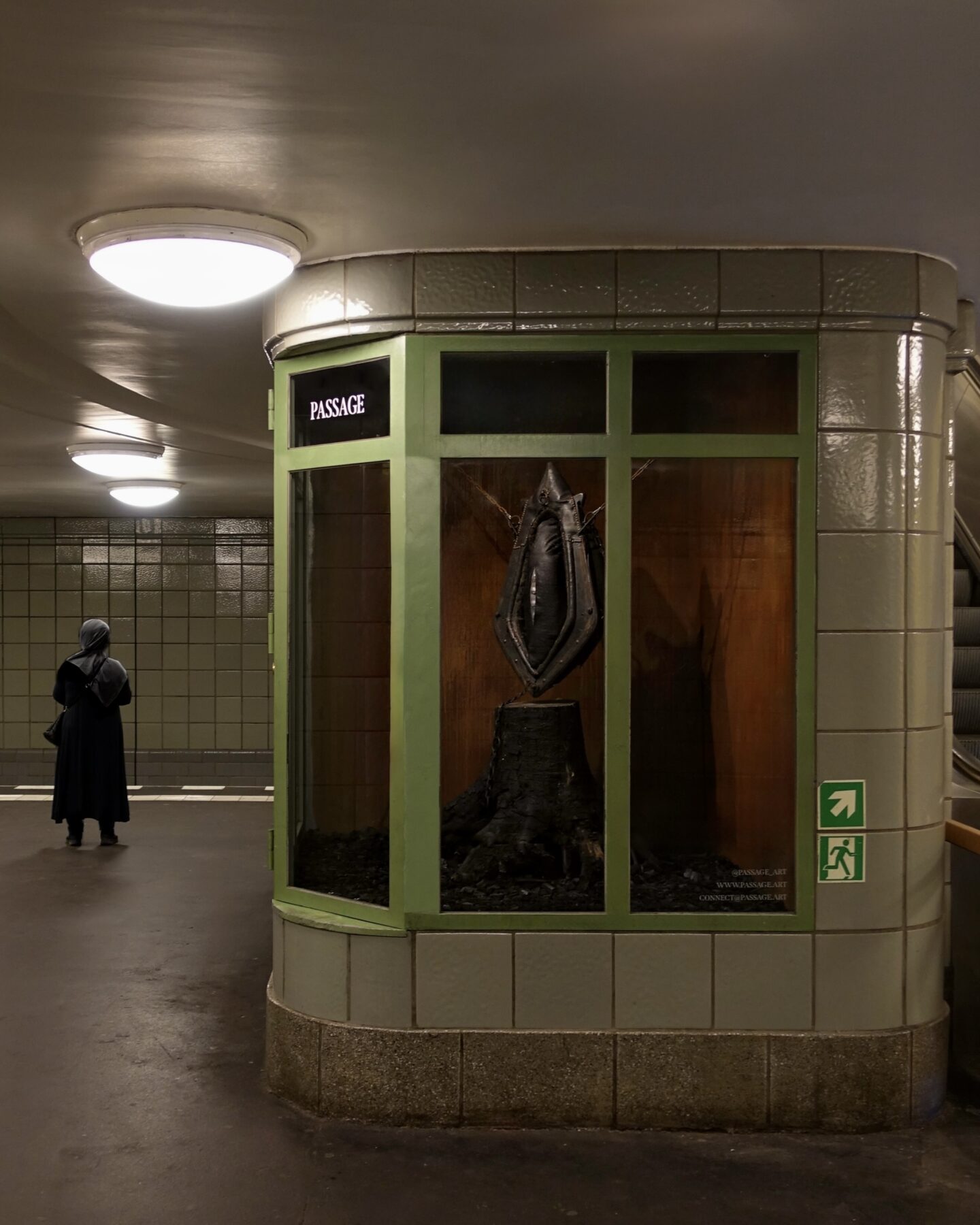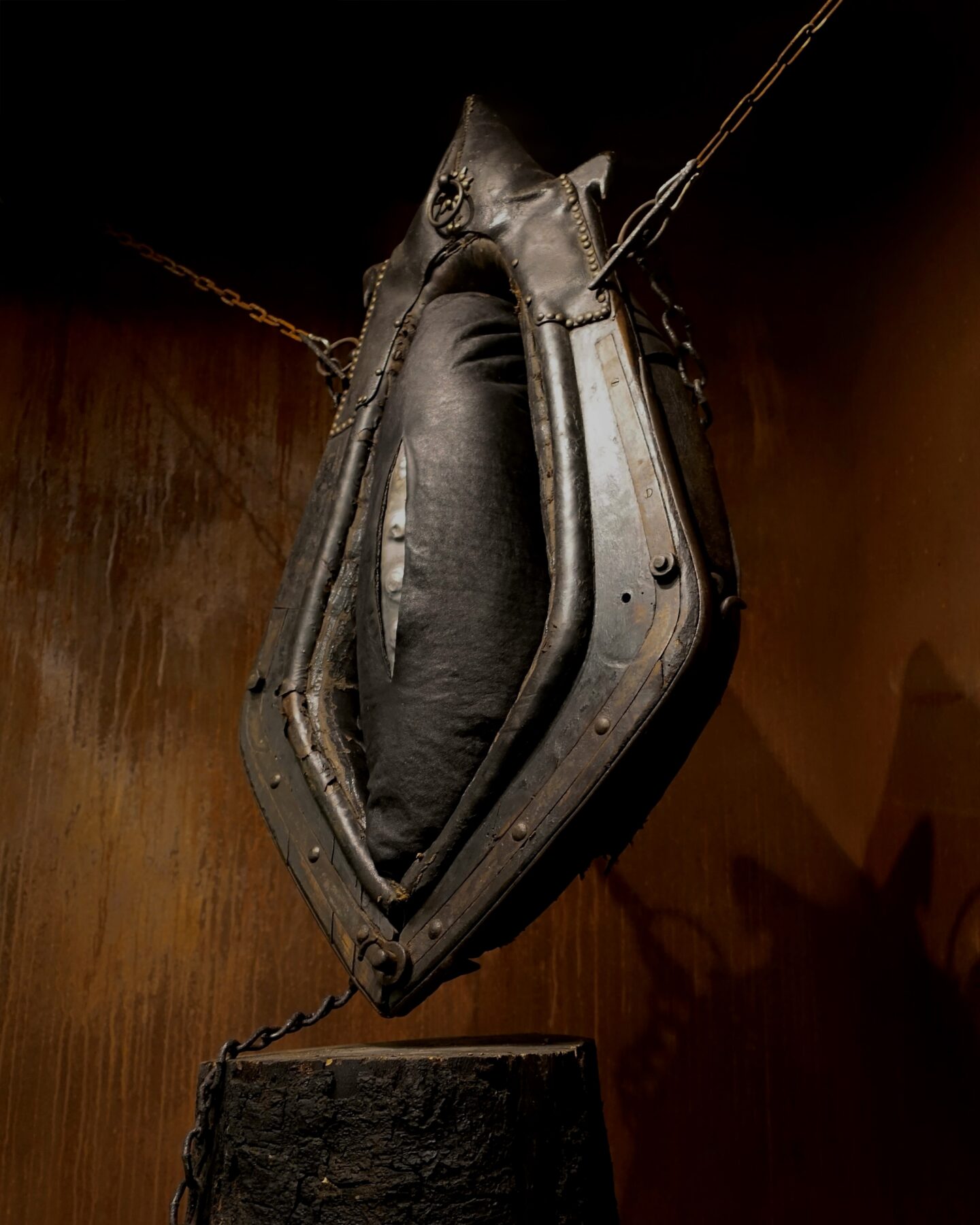
VISIONARY ISSUE VOL. B – LEN FAKI
LEN FAKI: THE PULSE OF PURE VISION BY ANN-KATHRIN RIEDL PHOTOGRAPHY DANIEL ROCHÉ






Art is subjective and always political. With his latest installation “SPINE BOUNDARY” at Hermannplatz, Berlin, Chinese born Artist LIANG FU cleverly portrays the concept of the absent presence of the body and evokes memories tied to a fading way of life. Through the absence of physical form, it reflects both human and animal bodies retreating into shared oblivion, while contemplating the displacement of traditional agriculture by industrialization. What was once a space of labor and life now stands as a silent shell, confronting us with the absence it contains. PASSAGE is a Berlin based curatorial platform, that partnered with LIANG FU to bring his vision through his installation to life. Read more about them later in the interview.
Paris based artist LIANG FU debuts his presence in Berlin’s art scene with a clever commentary on our societal reality
I kept hearing friends talk about the differences between the art scenes in Berlin and Paris, so I visited a few times, met some artist friends, and also stayed in Berlin.
Engaging, questioning, living
In sculpture, I tend to approach the work by considering the materials and their historical context, while in painting, I focus more on the perspective and language of the image.
Of course, I have been reflecting on this question especially after moving to France, because French and Mandarin are vastly different languages. I see painting and sculpture as separate languages, and this has made me think about how to communicate the meaning of my work through the artwork itself, so that people don’t need a specific cultural background to understand it. This has been the language I’ve been trying to refine in my creations this year.
I make time to visit Berlin every year. It seems to have more underground spaces and a strong influence from underground culture, which gives experimental artists greater room to survive and create. In contrast, Paris offers fewer such spaces. I believe this is closely tied to the art ecosystem and economic factors. Although Paris has become more international in recent years, the rising rent makes it increasingly difficult for many artists to sustain themselves—especially those in the experimental phase, who need more space and resources to take risks and make mistakes.
Victor Auberjonois first reached out to me on Instagram with an invitation to exhibit, and after some discussions between him and my representing gallery, Nicodim, we began exploring the uniqueness of both the space and the project. I’ve always been drawn to historically charged or atypcal spaces—they inspire me deeply. I believe that artworks dialogue with different meanings depending on the space they inhabit, and I’m constantly seeking new contexts and interpretations, which often lead to fresh insights and reflections in my practice.
PASSAGE is turning Berlin’s Art Scene upside-down and Hermannplatz is their Gallery
Tell us a little about the background and philosophy of PASSAGE as a curatorial platform:
PASSAGE was founded one year ago, inspired by Lucio Amelio’s legendary Parisian space Pièce Unique which was conceived in 1989 together with Cy Twombly. Reviving that radical concept, PASSAGE reimagines the act of exhibition as a distilled encounter, presenting a single artwork at a time to invite focus and reflection while offering a brief escape from daily routines.
Each presentation revolves around a single artwork, offering a lens into the artist’s practice. We create highly considered, often scenographic environments for every show, pushing the presentation of contemporary art into an immersive, experiential direction. The exhibition space itself becomes an artwork, a kind of sculpture in the public sphere.
PASSAGE is instinctive and independent. We are medium-agnostic and exhibit both emerging and established artists based purely on our curatorial interests. We don’t represent artists in the traditional sense, but sell on commission, allowing us to maintian freedom to collaborate with whomever we admire. Each show is a collaboration with the artist in which we treat all aspects such as writing, documentation, and archiving as integral to the project.
We hold a vernissage open to all on Hermannplatz for every of the monthly exhibitions in the space on the U-Bahn platform below.
Why did you choose the U-Bahn station Hermannplatz as a space to showcase the artworks? What reactions or emotions do you hope to evoke in passersby?
Hermannplatz is quintessentially Berlin – raw, eclectic, and full of energy. The mayor of Neukölln once described it as home to the most diverse population in Germany.
Architecturally, the station is striking. The interplay of grey-green and yellow tiles, the generous ceiling height, and the echoes of a complex historical past give it a unique presence. Symbolically, it is a powerful location, connecting the U7 and U8 lines, which run East-West and North-South, linking many major neighborhoods of the city.
This station is a place of motion and repetition but also solitude and sometimes even despair. We are interested in how contemporary art can quietly interrupt that flow, offering a moment of contemplation or emotional resonance amid daily transit.
Art doesn’t require prior knowledge. It lives in the perception of the viewer. By placing it in a public, unexpected setting, we invite anyone, even someone who has never stepped into a gallery, into a brief moment of introspection. We are not trying to elicit specific reactions. We are creating conditions in which something, however subtle, might unfold.
What are your future plans for the platform?
PASSAGE will carry on its monthly rhythm at Hermannplatz, while extending its presence beyond Berlin. For the first time, we’re sharing that PASSAGE is expanding to Mexico City, where a former taco stand will soon become our second exhibition space.
In September, we will present a very different project: a group exhibition featuring around 40 artists in one of Berlin’s most iconic locations.
Looking ahead, we hope to invite fellow curators to shape exhibitions within our spaces, building a multi-city, international platform that brings contemporary art to everyone – through windows, in transit zones, and always in unexpected ways.
This sculpture further explores the transformation of the relationship between humans and nature through metaphor. The horse stall, once a space of labor and close interaction between humans and animals, is now reimagined as a hollow shell — symbolizing disciplined nature, the erased body, and the alienation brought by industrialization. By reinterpreting this structure, the work turns a once-living space into a symbol of control, loss, and historical rupture.
The coal-covered floor and rusted walls are not only material choices but also symbolic expressions — they carry the traces of time, the corrosion of power, and the slow collapse of traditional structures under modernization. Through the use of discarded, repurposed materials, the artist transforms forgotten remnants into metaphors of memory, history, and political inquiry into existence.
In essence, SPINE BOUNDARY does not convey political messages directly, but through its use of material, metaphor, and spatial reconstruction, it raises profound questions about domestication, control, forgetting, and disappearance.
I never want to impose how I think people should feel. What I find more interesting is listening to what they tell me they feel.
Yes, I would consider the size and safety of the artwork since it’s in a public space. Other than that, I feel quite very free to create.
Of course, I noticed these elements and felt excited because they add more layers of interpretation and complexity to the work. They also allowed me to step away from painting practice and think about other issues. Last year, I worked with ceramics, a different material, and this year, in this sculpture, I used animal skin, which is also related to the body. This gave me a new understanding of bodily perception and is part of my exploration of the relationship between materials and perception in my creative process.
I hope to see many works that explore different aspects of humanity. Human nature is complex and ever-changing, which is probably why we are always fascinated by it. But I believe the simplest reason is that a good artwork is one that moves people.